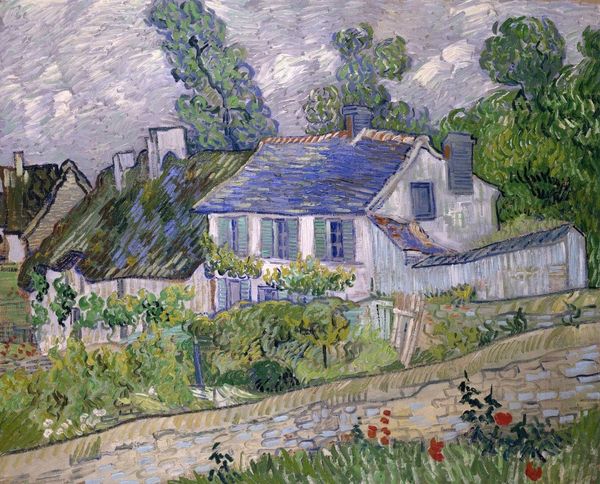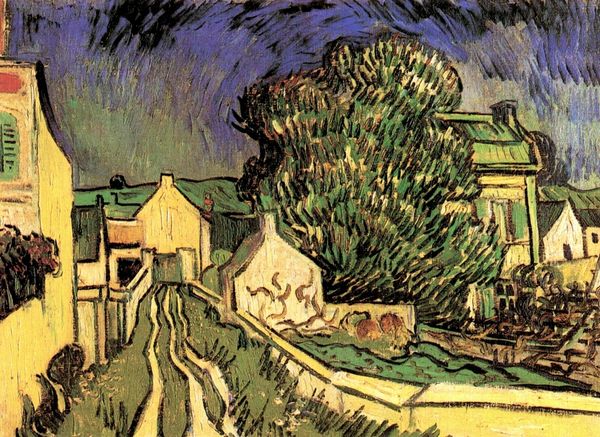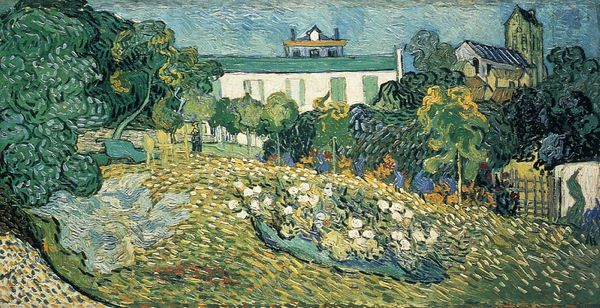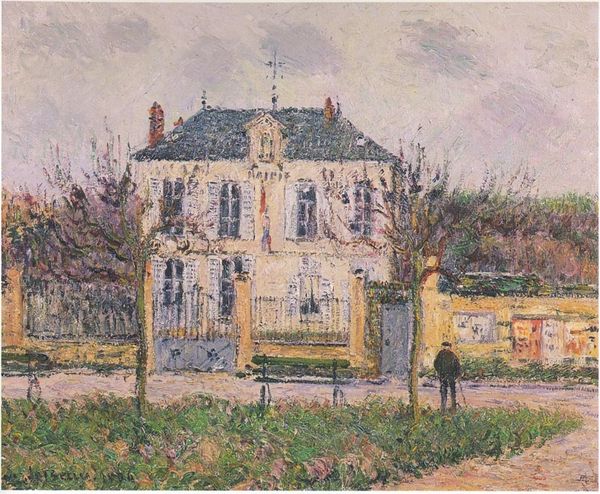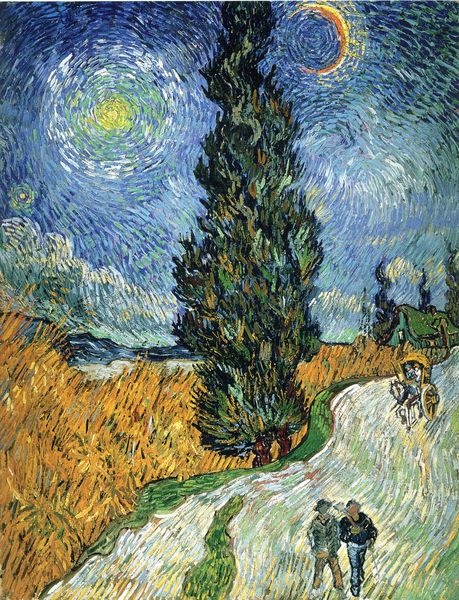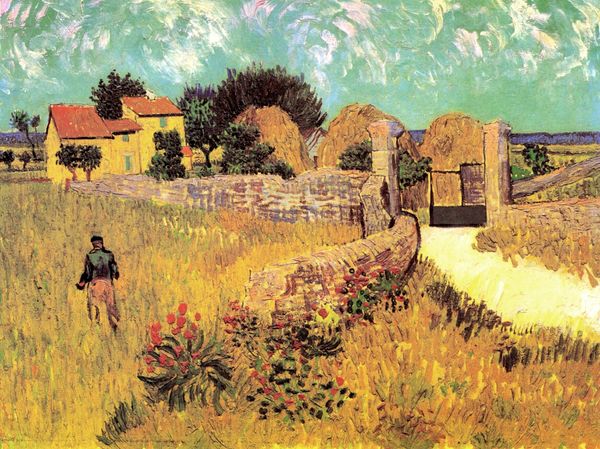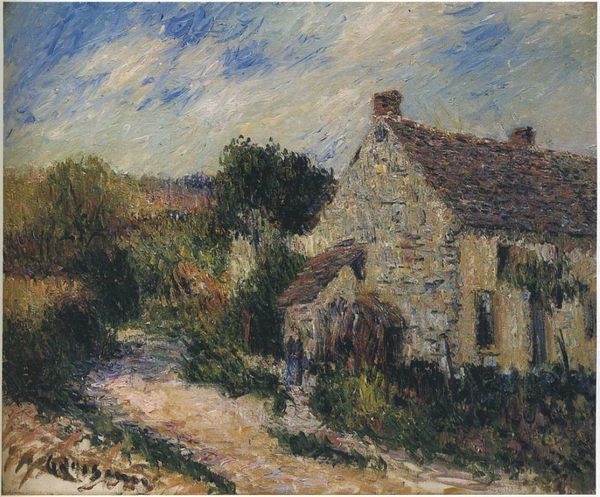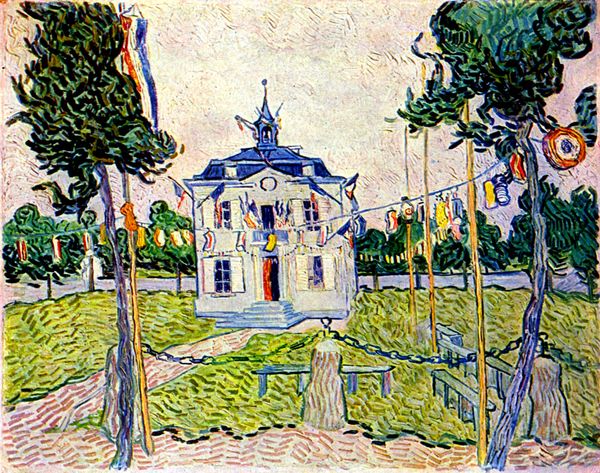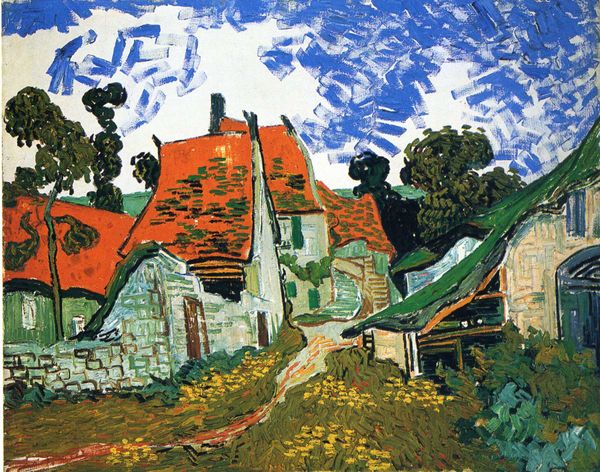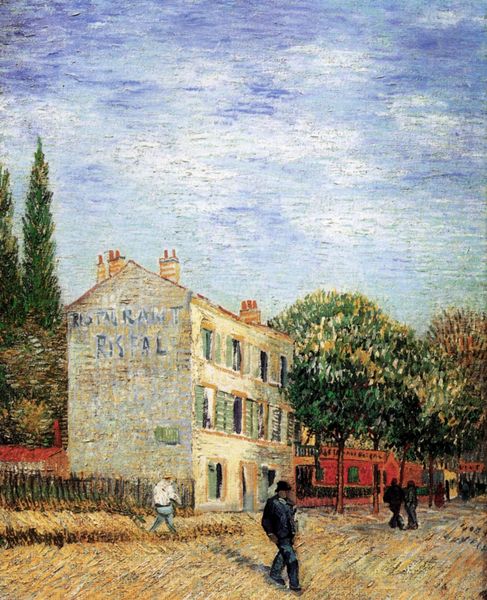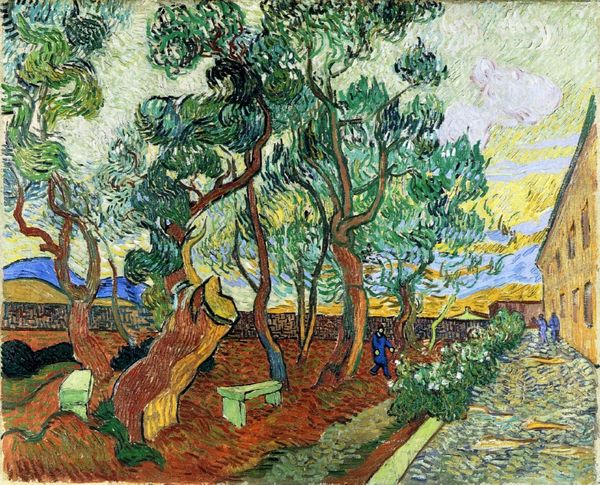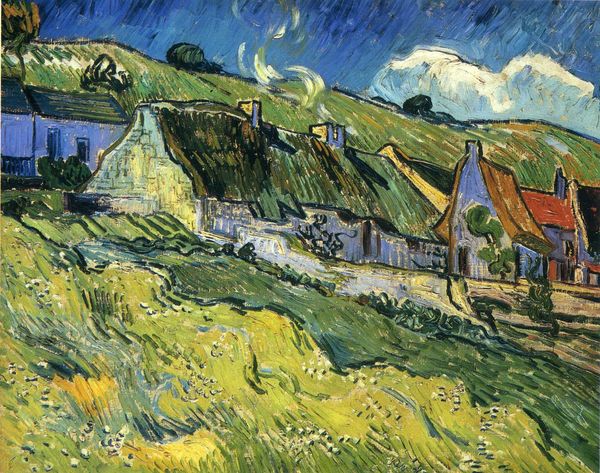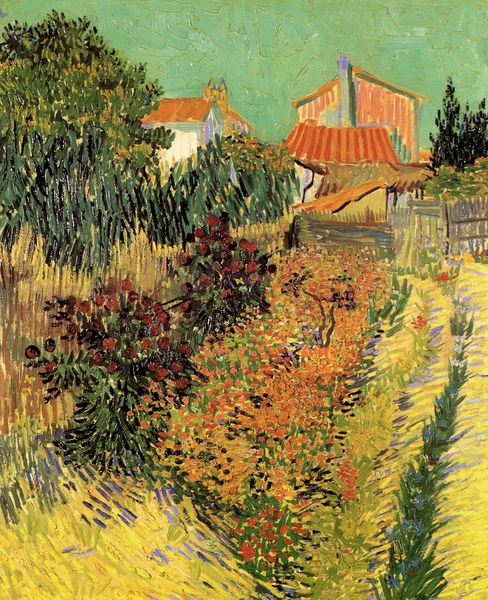
painting, oil-paint
#
night
#
painting
#
oil-paint
#
landscape
#
oil painting
#
cityscape
#
post-impressionism
#
building
Dimensions: 72.5 x 59 cm
Copyright: Public domain
Curator: Ah, Vincent van Gogh's "White House at Night," painted in 1890. Look at the distinct brushstrokes, the materiality of the oil paint thickly layered on the canvas! Editor: It's haunting, isn’t it? The swirls of the night sky press down on the building, giving it an almost claustrophobic feel, as if it’s being swallowed by the darkness. Curator: Consider the context—Van Gogh's time at the asylum in Saint-Rémy. He was permitted to paint, but always under supervision. This image seems like it captures that restricted access, his confinement reflected in those heavy brushstrokes. Editor: Absolutely, and let’s not forget the socio-economic implications of this image. Here's Van Gogh, an outsider, painting what appears to be a bourgeois dwelling, subtly hinting at class disparity through the very act of observation and artistic representation. Curator: Exactly! And what about the labor involved in its creation? The cost of paints, canvas, and Van Gogh’s time itself—it all speaks to the complex web of production supporting his artistic practice. How did he get those pigments, and who ground them? These questions are often overlooked. Editor: And the role of women within that system as well. Those figures by the gate could suggest their marginalization. They're blurred, their identities obscured. Is it a comment on their invisibility in a society structured around male dominance? Curator: Fascinating! It all boils down to the relationship between the artist and his environment, doesn't it? Consider also the impact of Japonisme on Van Gogh; the flat planes, the bold colors – these owe a debt to the influence of Japanese prints that flooded Europe in the late 19th century. Editor: Definitely, it underscores how movements and access to global markets influences art on individual and societal levels. This is not just about form and function but identity and who has the luxury of producing these visions. Curator: So, beyond its aesthetic value, it invites us to engage with its material and social underpinnings, expanding our understanding of both Van Gogh's world and our own relationship to it. Editor: Yes, it's not merely an artwork. It’s a conversation, a statement on visibility, labor, and the anxieties of its time – issues that resonate powerfully today.
Comments
No comments
Be the first to comment and join the conversation on the ultimate creative platform.
